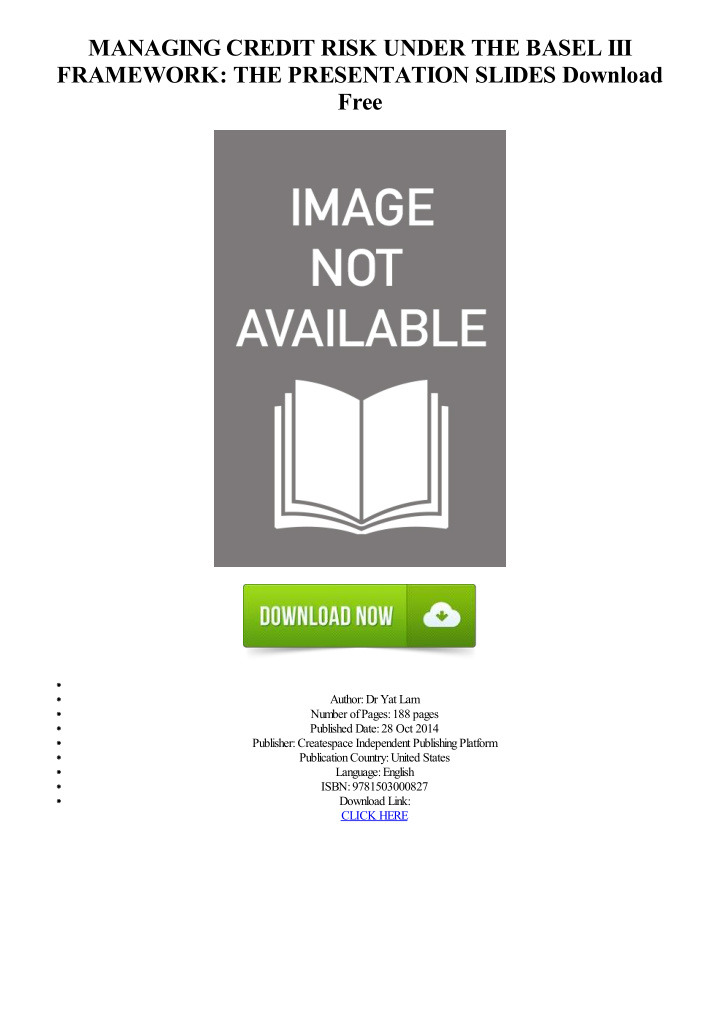



MANAGING CREDIT RISK UNDER THE BASEL III FRAMEWORK: THE PRESENTATION SLIDES Download Free Author: Dr Yat Lam Number of Pages: 188 pages Published Date: 28 Oct 2014 Publisher: Createspace Independent Publishing Platform Publication Country: United States Language: English ISBN: 9781503000827 Download Link: CLICK HERE
Managing Credit Risk Under The Basel III Framework: The Presentation Slides Read Online MIS developed to achieve this objective should support the ability to evaluate the impact of various types of economic and financial shocks that affect the whole of the financial institution. Third-party inputs or other tools used within MIS eg credit ratings, risk measures, models should be subject to initial and ongoing validation. Risk management processes should be frequently monitored and tested by independent control areas and internal, as well as external, auditors. The risk management function of banks must be independent of the business lines in order to ensure an adequate separation of duties and to avoid conflicts of interest. Unmanaged risk concentrations are an important cause of major problems in banks. A bank should aggregate all similar direct and indirect exposures regardless of where the exposures have been booked. Risk concentrations should be analysed on both a bank legal entity and consolidated basis, as an unmanaged concentration at a subsidiary bank may appear immaterial at the consolidated level, but can nonetheless threaten the viability of the subsidiary organisation. Risk concentrations should be viewed in the context of a single or a set of closely related risk-drivers that may have different impacts on a bank. A bank should consider concentrations that are based on common or correlated risk factors that reflect more subtle or more situation-specific factors than traditional concentrations, such as correlations between market, credit risks and liquidity risk. The growth of market-based intermediation has increased the possibility that different areas of a bank are exposed to a common set of products, risk factors or counterparties. This has created new challenges for risk aggregation and concentration management. Through its risk management processes and MIS, a bank should be able to identify and aggregate similar risk exposures across the firm, including across legal entities, asset types eg loans, derivatives and structured products , risk areas eg the trading book and geographic regions. The typical situations in which risk concentrations can arise include:. Risk concentrations can also arise through a combination of exposures across these broad categories. A bank should have an understanding of its firm-wide risk concentrations resulting from similar exposures across its different business lines. Examples of such business lines include subprime exposure in lending books; counterparty exposures; conduit exposures and structured investment vehicles SIVs ; contractual and non-contractual exposures; trading activities; and underwriting pipelines. While risk concentrations often arise due to direct exposures to borrowers and obligors, a bank may also incur a concentration to a particular asset type indirectly through investments backed by such assets eg collateralised debt obligations , as well as exposure to protection providers guaranteeing the performance of the specific asset type eg monoline insurers.
Recommend
More recommend